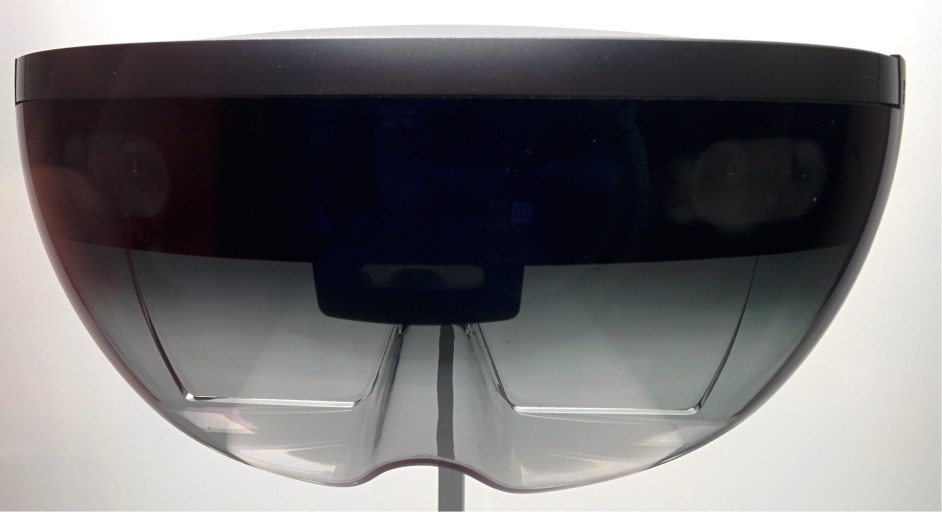
Microsoft’s HoloLens is no joke. We’ve now tried the company’s latest revision of its unreleased augmented reality headset and even built an app for it. The new hardware, which Microsoft also showcased during its Build developer conference keynote yesterday, feels very solid and the user experience (mostly) delivers on the company’s promises.
Earlier today, Microsoft gave developers and some of us media pundits a chance to spend some quality time with HoloLens by building our own “holographic application” using the Unity engine and Visual Studio.
HoloLens is all about augmented reality. It’s about placing objects into the real world, which you can still see while you’re wearing the headset. It’s not a virtual reality headset like the Oculus Rift, so it’s not about total immersion. Instead, it lets you see objects on a table in front of you that aren’t there in the real world, for example, and it lets you interact with them as if they were real objects.
When you first see somebody who is using HoloLens, you’ll probably think something is wrong with them. They’ll walk around things you can’t see, make random click gestures in the air (“air-tapping” is what Microsoft calls that) and probably ooh and ahh a few times.
Until you’ve used HoloLens — and very few people have — this all sounds very abstract. But once you strap it on and use it, it’s indeed a bit of a revelation.
The early (and highly positive reviews) from Microsoft’s January event, where a few select members of the press got to try it, weren’t an exaggeration.
Read More
Comments
Post a Comment